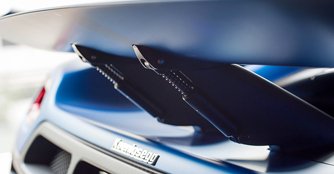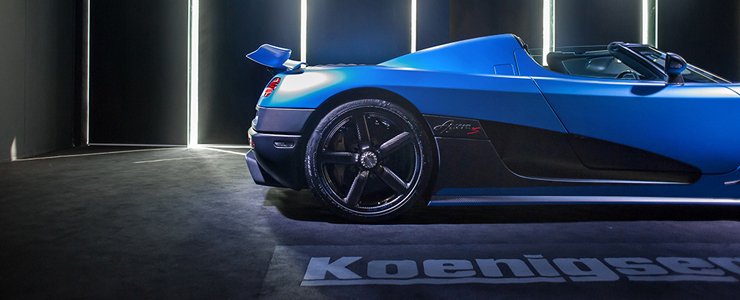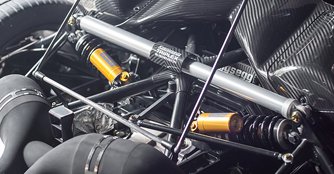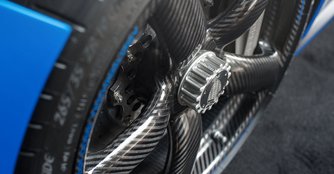What goes into a $5.3 million car
11 Jul 2013|17,846 views
Koenigsegg. Agera.
Unless you are quite a motoring nut, these names probably wouldn't ring a bell. The former requires a slight Swedish twist of tongue to read (and pronounce). Think of tongue-boggling French names such as Audemars Piguet and Jaeger LeCoultre - we are sure you came across much more.
Until recently, the name hit the local headlines, again. The brand made a brief appearance on our shores in 2005 with the CCR. The $2 million dollar car didn't find a local buyer then. Now though, its successor - the Agera S - has found a home in Singapore. And at the time of registration, it is the most expensive car on our roads - a gruesome $5.3 million.
To know more about what goes into such a hugely expensive car, we study some facts about the marque.
Since its start-up over a decade ago, Koenigsegg has built only 100 odd cars for the globe, making it an undecidedly exclusive brand.
Other than its rarity, the Agera has no lack of bragging rights. It holds six world records for acceleration and braking power, such as a mind blogging 14.53 seconds 0 to 300km/h timing, and shedding all its velocity in just 6.66 seconds.
A quick look at the figures also reaffirms its hypercar status. The 5.0-litre twin-turbocharged V8 in the Agera S produces a colossal 1,040bhp and 1,100Nm of torque. Mechanically, the Agera S is no different from its power-superior Agera R sibling, which, when run on E85 bio ethanol, is capable of 1,140bhp and 1,200Nm of torque. Instead, the S variant is catered for markets that lack the biofuel, and is optimised to run on lower octane gas - hence the lower output.

Koenigsegg builds its cars with deep and profound knowledge earned from the motorsports field. The devotion to perfection not only lies in the engineering process, but also in the way the car is built.
With every year's passing, the firm actually brings more of the manufacturing process in-house, so as to satisfy the ultimate goal of self-sufficiency. This is in stark contrary to most of the carmakers out there who increasingly outsources their manufacturing process.
 |
Each Agera began life as 400 individual pieces of carbon. The carbon monocoque forms the stiffest chassis of any production car today, with the ability to withstand 65,000Nm per degree - with its roof on or off. It is also the only hypercar in the world to utilise aluminium honeycomb in its monocoque. Even a wheel bearing can stand up to the toughest challenges - it was originally designed to support the main rotor shaft of a helicopter.

The Agera boasts one of the highest engine output ratings of today's road cars. But what's more remarkable than the numbers itself is that the engine is engineered in-house by Koenigsegg, making it the only limited volume supercar manufacturer to carry this honour.
The entire drivetrain package, which includes the engine, clutch, flywheel, dry sump system and Inconel manifold system (inclusive of turbos) is designed to be compact and light, and tips the scales at less than 200kg. All in, the Agera S weighs at only 1,430kg. These speak loads about the marque's engineering prowess.
A single man setting off to achieve what he has dreamt off has put Koenigsegg firmly in the world's radar of hypercar fans. Put simply, the Agera S is the creme de la de creme in the automotive world.
Koenigsegg. Agera.
Unless you are quite a motoring nut, these names probably wouldn't ring a bell. The former requires a slight Swedish twist of tongue to read (and pronounce). Think of tongue-boggling French names such as Audemars Piguet and Jaeger LeCoultre - we are sure you came across much more.
Until recently, the name hit the local headlines, again. The brand made a brief appearance on our shores in 2005 with the CCR. The $2 million dollar car didn't find a local buyer then. Now though, its successor - the Agera S - has found a home in Singapore. And at the time of registration, it is the most expensive car on our roads - a gruesome $5.3 million.
To know more about what goes into such a hugely expensive car, we study some facts about the marque.
Since its start-up over a decade ago, Koenigsegg has built only 100 odd cars for the globe, making it an undecidedly exclusive brand.
Other than its rarity, the Agera has no lack of bragging rights. It holds six world records for acceleration and braking power, such as a mind blogging 14.53 seconds 0 to 300km/h timing, and shedding all its velocity in just 6.66 seconds.
A quick look at the figures also reaffirms its hypercar status. The 5.0-litre twin-turbocharged V8 in the Agera S produces a colossal 1,040bhp and 1,100Nm of torque. Mechanically, the Agera S is no different from its power-superior Agera R sibling, which, when run on E85 bio ethanol, is capable of 1,140bhp and 1,200Nm of torque. Instead, the S variant is catered for markets that lack the biofuel, and is optimised to run on lower octane gas - hence the lower output.

Koenigsegg builds its cars with deep and profound knowledge earned from the motorsports field. The devotion to perfection not only lies in the engineering process, but also in the way the car is built.
With every year's passing, the firm actually brings more of the manufacturing process in-house, so as to satisfy the ultimate goal of self-sufficiency. This is in stark contrary to most of the carmakers out there who increasingly outsources their manufacturing process.Each Agera began life as 400 individual pieces of carbon. The carbon monocoque forms the stiffest chassis of any production car today, with the ability to withstand 65,000Nm per degree - with its roof on or off. It is also the only hypercar in the world to utilise aluminium honeycomb in its monocoque. Even a wheel bearing can stand up to the toughest challenges - it was originally designed to support the main rotor shaft of a helicopter.

The Agera boasts one of the highest engine output ratings of today's road cars. But what's more remarkable than the numbers itself is that the engine is engineered in-house by Koenigsegg, making it the only limited volume supercar manufacturer to carry this honour.
The entire drivetrain package, which includes the engine, clutch, flywheel, dry sump system and Inconel manifold system (inclusive of turbos) is designed to be compact and light, and tips the scales at less than 200kg. All in, the Agera S weighs at only 1,430kg. These speak loads about the marque's engineering prowess.
A single man setting off to achieve what he has dreamt off has put Koenigsegg firmly in the world's radar of hypercar fans. Put simply, the Agera S is the creme de la de creme in the automotive world.
Thank You For Your Subscription.




























































